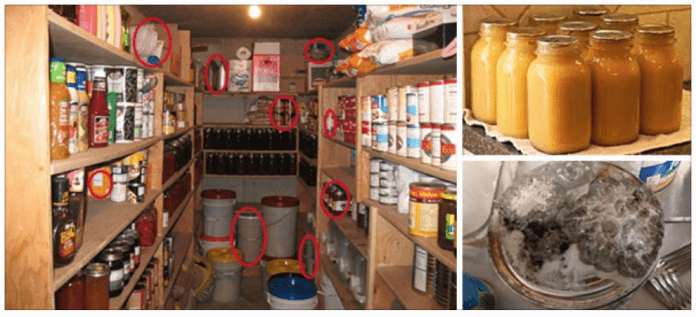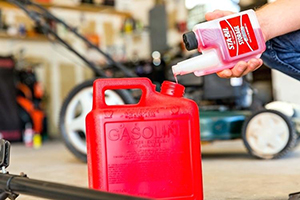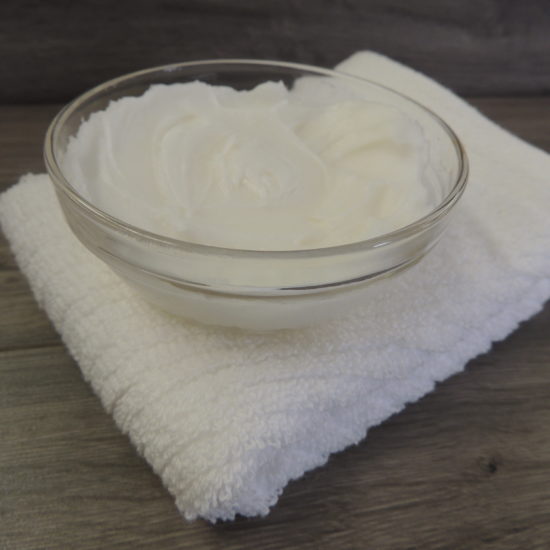
The result of all this is that we all make errors in building stockpiles, especially in the beginning. Of these errors, the most critical ones are those where we buy things that don’t last. The real danger here is that we have food that we think is good, but it turns out we don’t. Unless you check your food on a regular basis, this could end up being very dangerous, as the food is unavailable during a crisis, when we need to use it.
It’s imperative that we all check our stockpiles on a regular basis, at least once a year. This is part of my personal new year’s activities; something I try to accomplish sometime during January of every year. Even the best-preserved foods can go bad if something goes wrong in the preservation process. Checking them in January allows me to fit the replacement of those items into my plan for the year.
Some items just aren’t going to last, no matter what you do. Then there are those items you might have in your stockpile, which really aren’t going to do your family much good anyway, due to their lack of nutrition. Getting these items out of your stockpile and replacing them will help your family to be better prepared when the time comes.
Gasoline
Gasoline could end up being one of the most important things you can stockpile. The problem is, it doesn’t store well. Untreated gasoline can only be stored for about six months.
Even treated gasoline doesn’t do all that well, as you can only expect it to still be good for about a year. After that, many of the most combustible elements will have evaporated out, even in a sealed gas can.
Still, you need to have gasoline in your stockpile. The way to do that is to constantly rotate your stock so that none is over six months old. I have a 55-gallon steel barrel, laying on a stand on its side, which I use as a gas tank. Every month I take a tank’s worth of gas out of the drum and put it in my car, replacing that with fresh gas. In this way, I always have a good supply of fresh gas and I burn off the old gasoline.
Please note that my 55-gallon steel drum is a much better storage container for long-term storage of gas than plastic gas cans are. Gas cans are much more likely to leak, as well as absorb the gasoline, changing the chemical structure of the can itself.
Kerosene
Kerosene can also go bad when stored for a prolonged period of time. Condensation is the number one culprit, but not the only one. It will also develop a sludge, created by bacteria and mold that live in the kerosene, feeding off of it.
The solution for keeping kerosene for a prolonged period of time is to rotate your stock, just like I was talking about with gasoline. Always use an opaque plastic container, specifically marked for kerosene.
Breakfast Cereal
Breakfast cereals are a staple in most American households. Sadly though, most breakfast cereals hold very little nutrition for their volume. This makes them very poor food to be stockpiling. You would be better off storing whole grains and granola, which can be mixed together and eaten like cereal.
The other problem with breakfast cereal is that it goes stale very easily, even in a sealed container. Packing breakfast cereals in five-gallon buckets with oxygen absorbers don’t solve this problem, as that doesn’t do a thing about any moisture that might be contained in the bucket or the food itself, as I found the hard way. Adding silica desiccant packages can help, but as I already mentioned, there are other options that are better.
Ground Wheat Flour
Ground wheat flour is difficult to store for prolonged periods of time, due to the propensity to have insects or insect eggs in it. This is actually where the idea of sifting flour first came from. In many countries, you have to sift flour, because of insects getting into it while it is stored.
Storing wheat flour in vacuum-sealed bags, inside of five-gallon buckets, with oxygen absorbers helps. But even then, the flour has a limited shelf life. The difference is that it is about eight years, instead of eight months. But if you store whole grain that way, it will last for 20 years. The natural husk of the grain provides excellent protection from insects, and once you grind it, will provide you with healthier baked goods.
Snack Foods
To put it simply, there is no such thing as a snack food that is worthwhile as survival food. Granted, if that’s all you’ve got, it will provide you with carbohydrates and probably fats. But it will also provide you with a lot of chemicals to go with it. Those foods just aren’t designed to sustain life. The space you’re storing them in can be better used for other things.
Summer Sausage
Sadly, summer sausage just doesn’t store well for a prolonged period of time. I originally thought it would, especially since it normally comes vacuum-packed. But that isn’t enough to keep it from going bad.
What happens to summer sausage is that the curing process that is used to make it doesn’t stop. The nitrates and nitrites added into curing salt help to dehydrate the meat, but also work to break it down, turning what would normally be very tough meat into tender cured meat. But that process doesn’t really stop. The breakdown continues, turning that nice summer sausage into something much mushier.
As best I know that mushy summer sausage isn’t dangerous to eat. I’ve actually eaten it. But the texture and flavor of that sausage aren’t going to be the same. To me, it was really weird to eat.
Chocolate
As a confirmed chocoholic from a family of chocoholics, this one is even sadder than sad. Nevertheless, you can’t keep chocolate for a prolonged period of time, unless you can keep it cold. The problem is that heat causes the natural oils to seep out of the chocolate, messing up the texture and flavor. Eventually, you end up with something that looks more like white powder. It’s not dangerous to eat, but it’s not the chocolate you started out with.
Applesauce in Jars
Canned goods are generally good virtually forever. But there are some exceptions. One of these is applesauce canned in plastic jars.
Glass jars probably wouldn’t cause the same problem, but commercially canned applesauce is generally put into plastic jars. This allows the applesauce to discolor and the flavor to change. After about a year, it’s just not the same.
I have eaten canned applesauce that is more than a year old, without any negative side effects. But since we’re talking about stockpiling here, I don’t want to see what will happen to that applesauce in five or ten years.
Powdered Milk in “Cans”
Most canned powdered milk (and a few other things) comes in cardboard “cans” rather than metal ones. While this is fine for short-term storage, it’s not what you need for storing that milk for 10 or 20 years. The cardboard can become water-damaged, insects can eat their way through it and the milk can spoil.
Fortunately, the milk isn’t the problem; just the packaging. If you vacuum seal the powdered milk in Mylar bags and store it in sealed five-gallon buckets, it will last as long as you want.
Damaged Canned Goods
I’m a firm believer that canned goods can last forever; long past the supposed “expiration date”. At the same time, I recognize that it doesn’t always do that. I know this because I’ve had canned goods go bad; not many, but some.
This problem generally happens with acidic food and can only happen when there is an error in the canning process. The cans for these foods are lined with an acid-resistant film, protecting the metal can from the acid. But if the film doesn’t cover the entire inside of the can or if the film becomes nicked in processing, then the can is no longer protected from the acid in the food. That acid will eventually eat through the can, allowing air and bacteria into the can, where it spoils the food.
Of course, if you are checking your stock on a regular basis, you’ll see any cans with puffy lids, that are leaking, or which have mold on the outside of the cans. When these are found, they must be removed and any cans nearby checked, especially those stored below. At times, the damage will allow acids that spill out, which will attack the unprotected outer side of the cans it spills on.
Other self-sufficiency and preparedness solutions recommended for you:
The vital self-sufficiency lessons our great grand-fathers left us
Knowledge to survive any medical crisis situation
Liberal’s hidden agenda: more than just your guns
Build yourself the only unlimited water source you’ll ever need
4 Important Forgotten Skills used by our Ancestors that can help you in any crisis
Secure your privacy in just 10 simple steps























